By: Sara Coene
How to organise a meeting in such a way that they result in creativity and energy? How to ensure that people are actively participating instead of being only passively attending meetings?
The experience and knowledge of the employees is an important resource of valuable ideas and inspiration within your organisation. A source that needs to be tapped through techniques that focus on discussion and free up creativity. But discussions are often banned from meetings or suffer from lack of time. Passive listening, writing down information, and the one way defending of ideas flourish during meetings, while interaction and cooperation are crucial to deal with complex issues and to stimulate innovative thinking.
In the majority of meetings (and the preparation of them) the accent lies on the content and far less on the method or form of interaction. It is at least as crucial to think about this as well.
How to set up a meeting is entirely depending on the purpose of the meeting. You will for example use a different way of working for an informative meeting, which purpose is to spread information not stimulate a debate, than you will for a brainstorm.
Underneath we share some innovative ways to revitalise your meetings or organise them in an entirely different way.
 How Crowdsourcing Supports Social Enterprise
How Crowdsourcing Supports Social Enterprise
Open innovation can be organized into a more inclusive granting mechanism. In the past, nonprofits and other organizations would fund social enterprises by asking for a written proposal—but combining mentorship and crowdsourcing creates new opportunities and community solutions. Find out how it worked for Pact and the US Department of State in the AfrIdea case study.
Learn More
Meetings that boost creativity
-
Inspiration Tours
You can go to Silicon Valley on an inspirational tour. Or you can organise visits to inspiring companies yourself, drop in at The Loop, the Retail Technology Experience Center in Antwerp or take an inspiration tour at Living Tomorrow in Vilvoorde (Brussels).
At Pixar teams that are about to make a new movie are obliged to immerse themselves in the theme and environment of that movie to ensure that the new production has an incredible degree of accuracy and credibility and especially to get new ideas for the story.
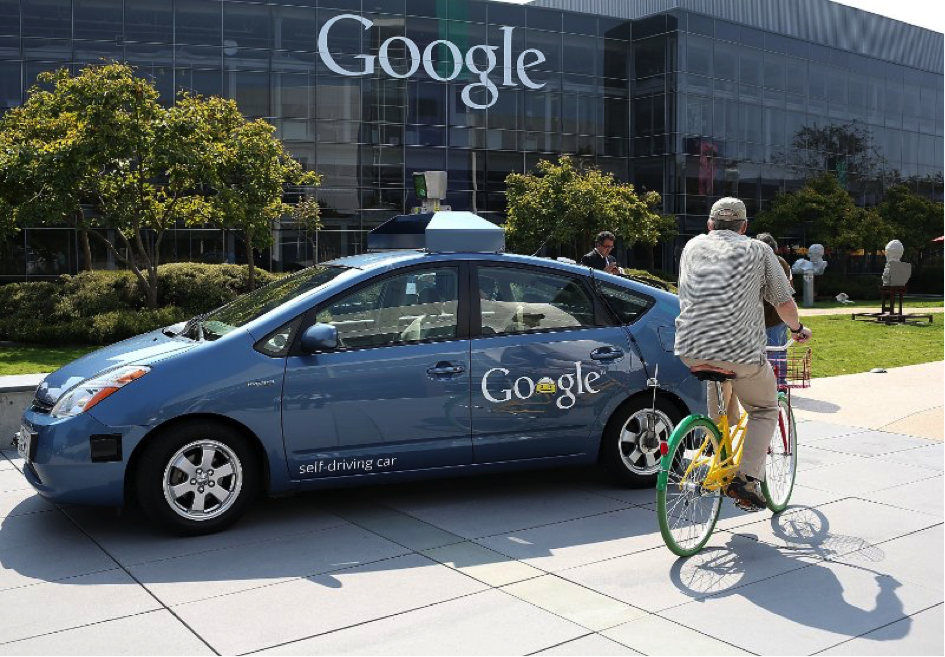
-
Internal Conferences
An internal event can boost enthusiasm and renewal of your company’s culture.
Johnson & Johnson for example, organises worldwide internal Ted Talks since 2012. Talks, with the purpose to create an environment in which employees feel safe to share ideas and, by that, feed their innovation culture. It started as a small gathering and has by now grown to an internal platform on which more than 128.000 employees can browse through new ideas.
In the same way, Volvo Group organises Group Talks and shares them worldwide through their online learning platform.
At Google they invite external speakers to their Talks@Google, a series of presentations sponsored by Google in their offices all over the world. Speakers are well known world leaders and artists like Lady Gaga but also less well known poets and artists.
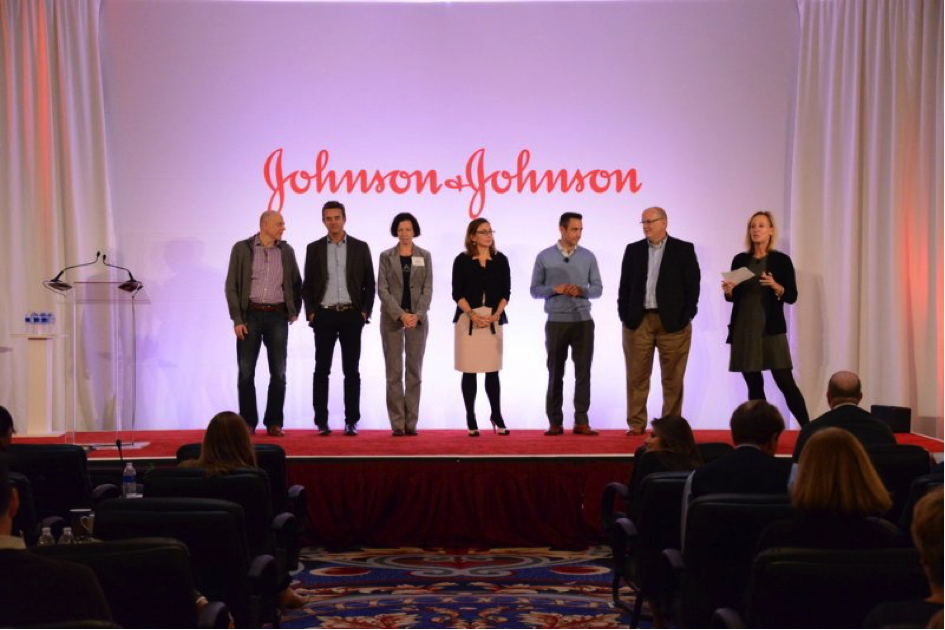
-
Startup Events
A simple way to inspire your team is to visit a start up event together. You can find one, like for example a pitch night or a growth hacking meeting, almost every day of the week where you can be inspired quite easily. These are, by definition, vibrant events where entrepreneurship and innovative talent are present.

Companies like BNP Paribas Fortis or KBC invest in these types of locations. For BNP Paribas Fortis Co.Station is the best place to show their internal innovations and organise events around entrepreneurship. Develop business and be inspired at the same time, these ecosystems help to realise this and you can profit from them as well.
Or organise your own event or community, on a certain topic that is important for your organisation or your team. Kindred spirits from different backgrounds that meet regularly can also offer an opportunity to be inspired. Or co-organise an event, like Colruyt did with 99U Local Ghent. That way they want to remain open for creative impulses from the outside world, find new ideas and spread innovation in all layers of the organisation. Get a feel of the atmosphere in this movie.
Meetings to generate ideas
-
Notes Day
Pixar regularly organises a “Notes Day”, an internal reflection day on which employees gather in small groups. At first, they start in their own, trusted teams but after that, people of different departments are brought together to think about the most relevant issues or challenges of the company. These challenges were put forward by themselves, which makes it a very human focused management approach that raises involvement and energy.
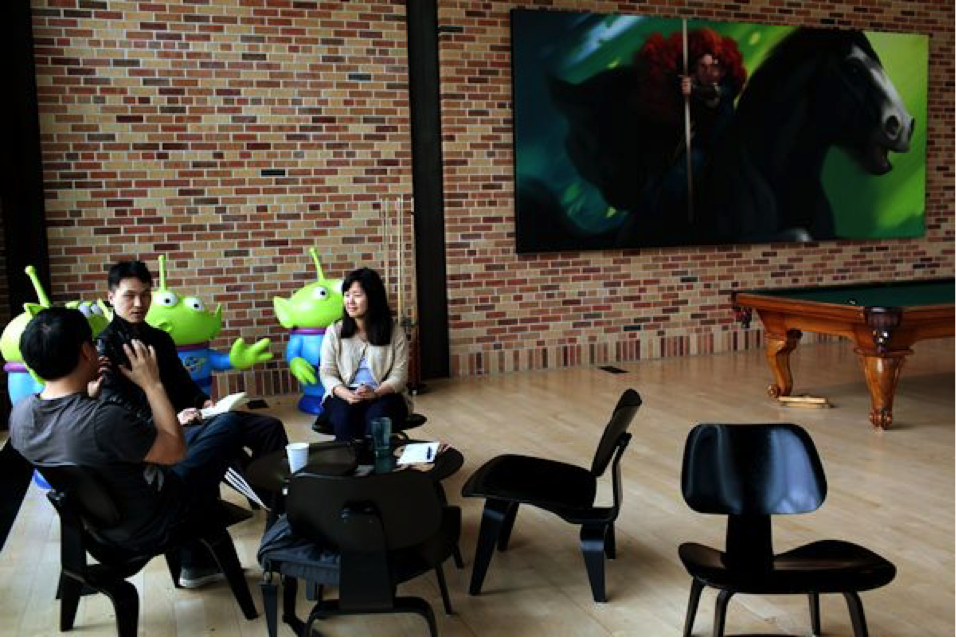
-
Hackathon
A hackathon is a meeting of software- and website developers to work on common projects. Currently, it is also used to creatively solve issues that are not per definition software related, like marketing issues or specific challenges within HR. Some even call it the new brainstorm. The big difference with a brainstorm is the fact that ideas are not only generated but further developed by using a software code or prototypes of hardware or products and services.
In other words, you make ideas tangible and because of that they can be tested quickly on their potential. A hackathon typically lasts anywhere between a day and a week.

At LinkedIn they organised a HR hackathon, together with other companies from Silicon Valley, with the goal to address the low engagement scores over the life cycle of employees.
-
“Dare to ask-sessions”
Closer to home, and accessible are the ‘Dare to ask-sessions’, based on the book with the same title.
Dare to ask is literally the courage to ask questions. During such a session, people with questions meet people who like to think along. It is a combination of inspiration, networking and brainstorming about individual questions and can therefore easily be used in an open session or internally within an organisation.
The City of Mechelen organised a couple of ‘Dare to ask Sessions’ last year in which everyone could participate and during which tips and ideas were gathered for activities and new services in the library the city was going to build in the Predikherenklooster.
Formats that involve participants in valuable discussions
-
Open Space
Open Space Technology is quite a new format for larger groups, used all over the world. This method is very effective when you work with groups of 10 up to 1000 persons.
It is like a self-steering meeting, without predefined agenda in which the agenda is created during the meeting from input of the participants. It is a co-creation technique for larger groups. That way, you can work with a lot of people over a short period of time on a specific topic. Harrison Owen, the founder of this method, got the idea after a conference where the participants agreed that the best part was the coffee break. The real important topics were discussed during the breaks, and often far more enthusiastic than during the official program.
In this video, you get a first impression on how it works.
Open Space Technology step by step from formapart on Vimeo.
Boeing is an organisation that regularly organises these kinds of sessions, with for example topics like streamlining the operations or simplifying communication. During another session, they brought all HR employees from all over the globe together to create synergies concerning employee related topics.
-
Fish Bowl
This is a very effective methodology to structure a debate or discussion. A small group of participants will form a circle around which other participants will take place. The circle is like a natural ‘fish bowl’ where the other participants look at and listen to without interfering. After a while, they can enter the fish bowl themselves by replacing someone else and by doing that, contribute their ideas to the discussion.

iMinds for example organized, during one of its conferences, a debate in which professionals from different organisations discussed what a strong local media sector could look like in 2020.
They used the Fish Bowl technique for this to ensure that everybody, in a short period of time, was given the chance to participate in the debate and share their ideas.
-
World Café
This is a creative process to realise a good dialogue and exchange of knowledge on a specified topic.
The participants are split into smaller groups of 4 to 6 people to discuss the topic around ‘bar tables’. The composition of the group changes because everybody moves on to other tables after a short period of time. One person always remains at the table as host and by doing that, ensures that exchange of knowledge is fast and captured.

This technique is used regularly with large groups to involve employees of an organisation in thinking about the vision of the organisation or department (the worldwide record is 10.000 participants which proves that it is a co-creating technique that works for (very) large groups).
Ways of working to pitch ideas
-
Pecha Kucha
Pecha Kucha is Japanese for ‘small talk’. A Pecha Kucha night is an event in which participants present a slideshow of 20 pictures, in a timeframe of 6 minutes and 40 seconds. Each picture is therefore shown for exactly 20 seconds. These criteria force the participants to be creative and very much to the point.
It is used to present ideas, even if there are no boundaries to the content of the meeting. Everywhere around the world, these Pecha Kucha events are organised and it is perfectly possible to organise it within your own organisation.
Sometimes people claim that the success rate of normal presentations is 20% while it is 80% for a Pecha Kucha! One of the most important reasons is that the presenters are forced to prepare thoroughly.
At software giant Autodesk, CEO Carl Bass asked his employees to present their ideas and solutions this way. Most presenters, according to him, think more about what they want to say instead of thinking about what the audience wants to hear. Pecha Kucha ensures that people organise their thinking process and eliminate all waste.
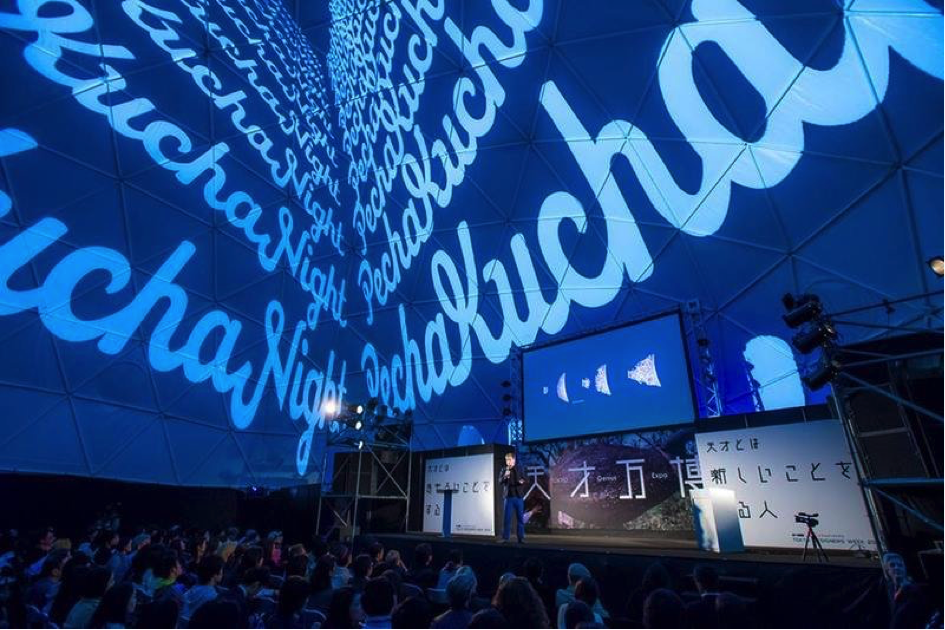
-
Rapid Demos
This works like a speed date or speed networking. The difference is that it is not about selling yourself or your business but about the pitching of your idea. Pitchers are spread around the room and every time the bell rings, 4 to 7 participants gather around a new pitcher. Every 5 minutes, the audience moves to a new pitcher and that for a full hour. It is, amongst others, a good trial for presentations to management or for a Pitch Night.
-
Pitch Nights
It is hardly possible to open a book on innovation in which the word pitch is not even mentioned. The word was at first used to sell an idea to a venture capitalist to get investments. By now it is used in a broader context by organisations to get support for internal changes or innovations.
When innovation or intrapreneurship programs are launched in companies, in the innovation process, a pitch moment is a standard item. Presenters are prepared to go from idea to pitch.
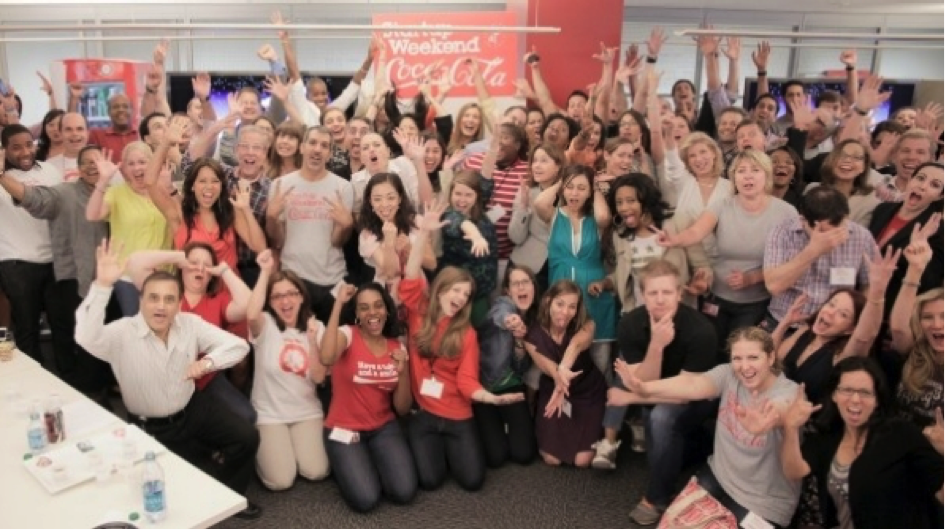
Coca-Cola wanted to stimulate innovation in the organisation. That is why they organised an internal event with 76 employees at their headquarters in Atlanta, where they formed teams to come up with ideas and then give a pitch to the board of management. By now, more and more organisations have started these kinds of events. You can organise pitches, not only for innovation of products or services but also for generating ideas on internal changes.
Ways of working for the follow up of ideas and projects
-
The Huddle
The huddle originates from sports and is an action in which the team gathers in a close ring to briefly discuss the strategy, to motivate each other and to, intermediately, celebrate successes. This approach has by now spread out to organisations with the aim to improve cooperation and follow-up closely.
Such a huddle is often organised on a daily base but any other frequency will do. In this meeting everyone is standing up and it is very brief (5 to 10 minutes). It takes place at the same location each time, often in the midst of the office. Information is exchanged quickly, which improves the communication tremendously. Good communication is essential for innovation and creativity, so the huddle is absolutely a good way to stimulate creativity out of the daily operations.
You decide on the agenda of the huddle, but it usually contains a short reflection on the day before, the targets for today, identication of the hurdles and fixation of the actions.

-
Kanban
While the huddle is about cooperation and communication, the Kanban is mainly used for the lean follow up of projects and change. Both are stand-up meetings but the content is very different. Scrum is often mentioned in relation to Kanban. While scrum is focused on agile software development (and thus is mainly IT driven), Kanban is about agile change management and can be used throughout the organisation.

-
Teamstreamer
The Teamstreamer is an application of the Huddle and offers a framework to communicate with your team on a regular basis. It contains several fixed data, like the detailed vision, strategy and objectives and some variable data like KPI’s, feedback and ideas plus actions. You can combine it with the Kanban which allows you to follow up on multiple projects in a flexible way.
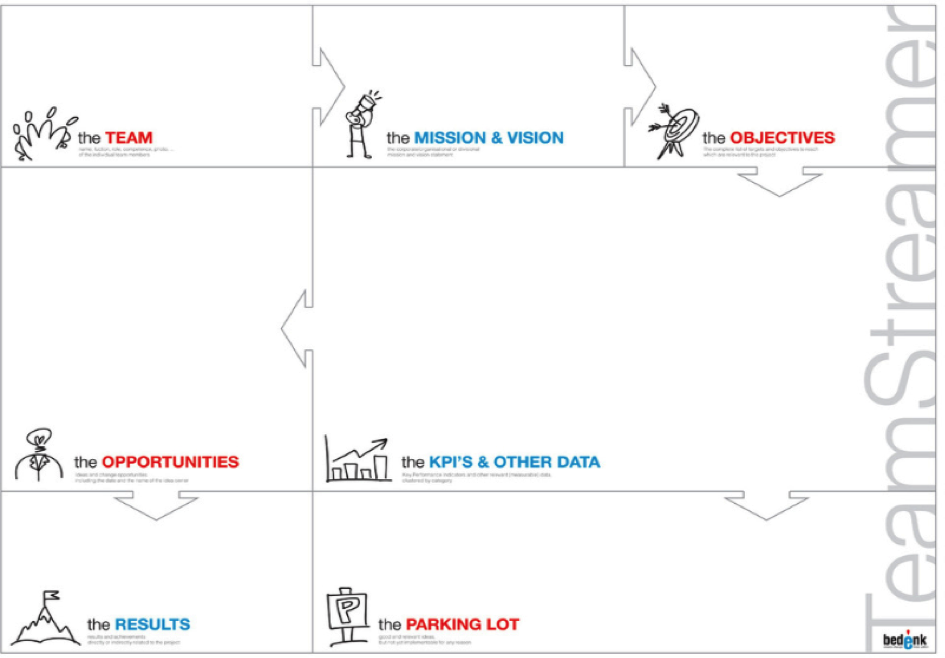
Although these meeting formats might seem simple, a small warning is needed: first start to identify carefully which technique is best used for your specific challenge and what it entails. The success is entirely depending on a good preparation and facilitation of the meetings.
By Sara Coene
About the author
 Sara helps managers develop their Creative Leadership. She’s a Design Thinking Coach and Managing Partner at Bedenk, a creative Consultancy and Business Coaching agency focused on the development of Business Creativity within organisations.
Sara helps managers develop their Creative Leadership. She’s a Design Thinking Coach and Managing Partner at Bedenk, a creative Consultancy and Business Coaching agency focused on the development of Business Creativity within organisations.


